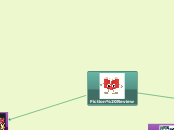Fiction Review
Story Elements
Plot
Plot Structure
Exposition
Rising Action
Climax
Falling Action
Resolution
Flashback
Foreshadowing
Characters
Protagonist
Antagonist
Setting
Theme
"Never judge a book
by its cover"
"Hard work
pays off."
Conflict
Internal Conflict:
Man Vs. Self
External Conflict
Man vs Man
Man Vs. Nature
Man Vs. Society
Man Vs. Technology
Literary Terms
Figurative Language
Metaphor
"I am an ice cube."
"Love is a battlefield."
Simile
"Mindomo is as fun
as video games"
"Love is like
a battlefield."
Personification
"The sun woke me
up with a smile."
"The trees were dancing
and waving hello."
Hyperbole
I told you a million times.
Idiom
"You're on fire!"
"It's raining
cats and dogs."
Sound Devices
alliteration
"Sally sells seashells
by the seashore
"Peter Piper picked..."
onomatopoeia
Pop
Buzz
pow
repetition
rhythm
rhyme
consonance
Genres
science fiction
dystopian fiction
1984
The Hunger Games
Maze Runner
apocalypse fiction
The Walking Dead
historical
fiction
realistic
fiction
The Outsiders
romance
Action/
Adventure
Fantasy
horror
